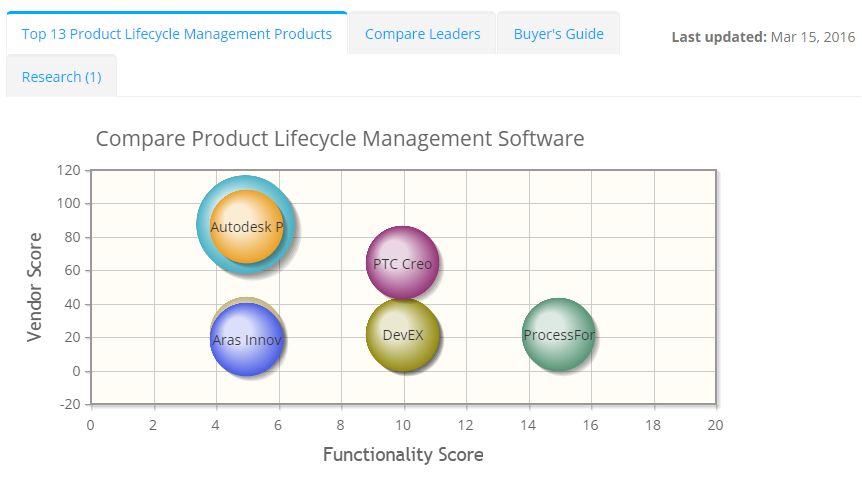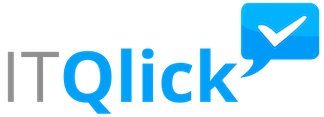We publish unbiased reviews. Our opinions are our own and are not influenced by payments from advertisers. This content is reader-supported, which means if you leave your details with us we may earn a commission. Learn why ITQlick is free .
A Buyer's Guide to Business Software Solutions
How to Evaluate and Buy Business Software
If you’re somehow puzzled if this article is only for a specific size of business, no, it’s not. This is for you SMEs, MNEs and start-ups software buyers. Also, we’re not talking about a specific software solution here. Whether the software solution that you’re planning to buy is for Accounting, Business Intelligence, ERP, CRM, Help Desk, Maintenance Management or other types of application, one thing is for sure; with the help of this article, you will be able to know the right process in evaluating and buying a business software solution.
We’ve been into the software business for years and we’re seeing a lot of nitty-gritty things that often bring confusions and hesitations to many companies looking for better software solutions. Some companies can’t afford to let go their legacy systems while a few is encountering technological snags once the new system is in place. While this is the underlying truth behind software acquisition and implementation, what’s exciting about buying a business software solution is that there is a clear and obvious proof that thousands of companies and corporations today are happy with the benefits this technology is bringing into their respective businesses. There is a significant increase in their revenue and the growth is on-going. And it’s easy to say; many from the Fortune 500 companies are making a lot of money because of their smartly-acquired business software.
So, let’s get straight to the point. What should you do in order to acquire that business software that could make your organization achieve its goals? The answer to this is pretty straightforward: evaluate and buy that right business software. Yes, that’s what you need to do and here’s the best manual from ITQlick.com that could certainly help you in doing that strategically.
Consider the Needs of Your Organization
Let’s assume that at this point, the entire management team agreed that you are ready to invest on a certain software application. The budget has been compromised and the key persons who will be involved in the acquisition process were already identified. Therefore, it’s time to approach things the project management way.
Define the Project
Every business software solution is categorized base on application type, features, deployment model, market size and pricing model. Remember that our objective here is to evaluate and buy a business software product that will fit into the size and present needs of your business. So what the project management team should try to deal with first is to define the real requirements of your business exactly base on the categories set by the software industry. Moreover, by doing this activity, you are already narrowing down your search for the right solution. Now, consider bringing this list of FAQs to the project management and aim to come up with clear-cut answers.
-
What type of software is needed? Is it Integrated-Suite, Best-of-Breed or Industry-Specific? Ask your CEO’s main agenda and find the perfect match from these available options.
-
What are the core and secondary features? Are you looking for basic, advanced or hi-end features? List down the specific features per category and allow the department managers and supervisors to give their insights on this list.
-
How are you going to deploy the system? Would it be on-premise, cloud-based, hosted, or mobile-based? Weigh these options with the help of your CIO.
-
Are you going for Tier 1, Tier 2 or Tier 3 vendors? Their offered solutions are base on the size of their target market - SMEs, MNEs or start-ups. Seek your CFO’s advice as it is important to match your financial capacity against the cost of the solution that the providers have for you.
-
Are you willing to pay for the perpetuity software license or a subscription-based solution is way better? How many users are there and what would be their roles in using the system? Solicit feedbacks from future end users for they know better what challenges and risks might possibly come along their way when they’re using the system.
Finalize the BOM or List of Requirements
After providing definite answers on the above questions, we can say that the project has already been defined. Your procurement team is now ready to do their role in the acquisition process of this solution. However, in order for them to execute their job properly, they must have the complete list of requirements - features, specifications, hardware, and the software product. In other words, the Bill-of-Materials (BOM) that is final, complete and well-prepared must be handed over to the procurement director. Needless to say, it is very important that everybody is following the company purchasing and procurement protocols at all times.
Request for Proposal (RFP)
The RFP process will bring everything into formality. Since you’re more likely in a line of business that doesn’t regularly buy software products, it is of critical importance that your RFP is well-structured before you send it to your prospect solution providers.
Draft the RFP
An RFP that contains all the relevant information as discussed during the project management meetings will enable the providers to return back to you their proposal that is complete and substantial. Therefore, your RFP should basically contain the following:
Brief Introduction
-
Company Name
-
Mission and Goals
-
Purpose of the RFP (or the need for software solution)
Business Background
-
Organizational Structure
-
Current Situation (IT infrastructure, system currently in-use, system issues and desired solutions, etc.)
-
Major Objectives of the Software Purchase
Request for Specific Requirements
-
Solution Functionality
-
System Specifications
-
Vendor Company Information
-
Price Model, Service Plans, Package Options
Other Important Inquiries (if necessary)
Send the RFP
Well-structured RFP will bring a lot of advantages especially when the proposals from various providers are received and then subjected for review and analysis. Send your RFP to at least three to five providers (or prospects which you have already shortlisted during the project definition phase). Depending on the complexity of the solution, most vendors will send their proposal in a matter of time, which could be around 4 to 6 weeks for Integrated-Suite solution.
Why still send RFP?
Is there really a need for RFP if your preferred solution (like cloud-based) and the service plans or packages are already displayed on the vendor’s website? Well, yes, you still need to undergo the RFP process. For most sales people, they certainly know that those figures appearing in the vendor’s website are usually the “list price” and not the “actual price”. More importantly, the vendor’s proposal (response to RFP) will serve as your main basis for the negotiation. Therefore, sending an RFP is a strict requirement.
Follow up questions relevant to RFP
More often than not, questions and concerns will be raised by the vendors to whom you send the RFP. You have to entertain them with utmost professionalism. Solution providers who are seeking further clarifications relevant to the RFP are consisting of professional software experts who wants to help your organization as much as they can. Entertain them but at the same time, always be cautious when providing additional information which you know is confidential or proprietary.
Evaluate the Proposals
Always refer to your finalized BOM when tabulating the contents of each proposal. Part of this process is to check the features that are available from this certain vendor and to cross out those that are not. While using spreadsheet aids the tabulation process, laying down the document proposals on the table and allowing your project management team to review them one by one should always be conducted. Evaluating the proposals in full force can help strengthen your decision-making process. Have another round of brain-storming session and come with the name of your preferred solution provider.
When selecting the final vendor, always promote the best interest of your organization. Consider answering these questions with full sincerity.
-
Which vendor can provide the long-term benefits to your organization?
-
Which vendor can provide the best and honest service from acquisition to full implementation?
-
Which vendor is willing to devote most of its time in better serving its client?
Contact this solution provider and in your own strategic approach, try to get the answers to those three important questions above. In most cases, vendor who really wants to prove its craft will offer product demos on a higher level. Others will even invite you to check their already deployed and working systems. Feel free to connect with this type of vendor. Conduct simulation and testing, be it a cloud-based or on-premise solution. Examine all aspects and angles especially those that your project management team want to really know in-depth. For as long as it could help you arrive at a better decision, consider doing all the options available – for the interest of the organization.
Enter the Negotiation Process
Most solutions providers can be flexible in terms of pricing. Although the final say is oftentimes on the mouth of the sales person from the vendor’s side, a good negotiation process can always deliver a win-win situation to both parties involve. While negotiation sometimes cannot be settled in one sitting session, always be honest with your intentions whenever negotiating with your provider. If it’s about your budget, justify it with clarity. If it’s about their service plans, tell them what’s lacking or missing on their solution. At the end of the day, the most important event that should happen is that both of you are shaking hands because of a well done negotiation process.
Seal the Contract
So what are you going to do on a contract that involves a significant amount of investment? There are three project management approaches for this.
-
Pass the ball to you legal team. They know what to do and more or less they will tell you if there is something wrong with the contract. Give them enough time to review before they affix their signature and then finally seal the contract.
-
Hire a consultant base on the technical aspect that you want to clarify in the contract. If it’s the Scope of Work (SOW), a software implementation expert is the right person. If it is related to complex legal terms and conditions, a lawyer can help. If it has something to do with money, invite an accountant to conduct a thorough review and computation if necessary.
-
Always consider consulting your project management team. Remember that the CIO, CFO and CEO are all team members. They will be the signatories and they know what’s best for the interest of the company when signing a contract agreement.
From evaluation to buying stage, it is important that the project manager must take full responsibility of monitoring all the works identified and distributed among team members. This is why delegating the right project manager is also an important consideration when buying a business software solution. And again, ITQlick.com wants to emphasize that whatever the size of your company is, using the project management approach will always lead you into a better outcome – that is getting what you paid for the right business software solution.
ITQlick chart - 2023 best Product Lifecycle Management Software
 Finding the right business software for your business
Finding the right business software for your business
Proper business software selections are the precursor to successful deployment and business growth. Finding the right solutions doesnít have to be complicated, and it doesnít have to take days or weeks of your time.
After researching over 5,000 systems, we can identify the best solution for companies of all shapes and sizes. ITQlick.com is 100% free for software buyers.

 Shlomi Lavi
Shlomi Lavi